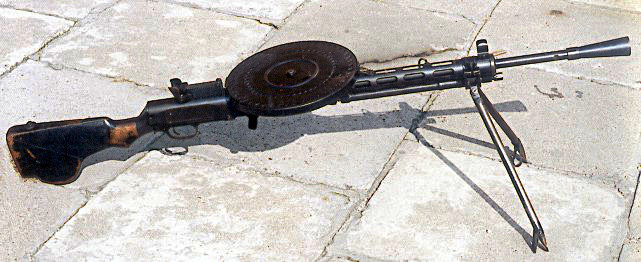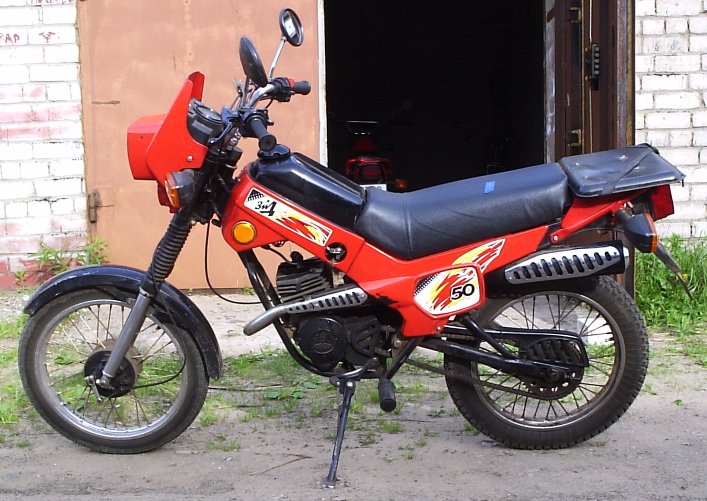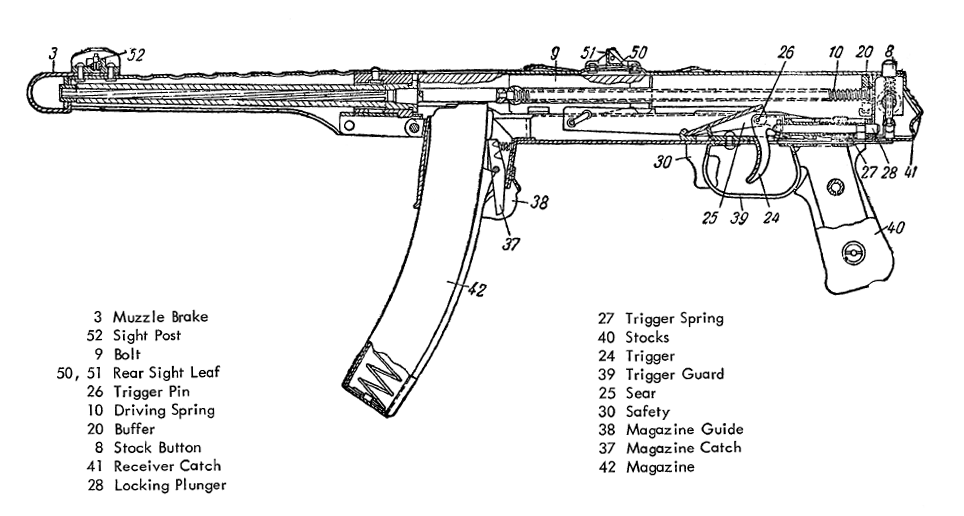|
AK-47 (2020 Film)
''AK-47'' () is a 2020 Russian biographical film about the experiences of Mikhail Kalashnikov, inventor of the AK-47 assault rifle. Elena Kalashnikova, the designer's daughter and a consultant to the Kalashnikov Concern, took part in the production of the film. The film was directed by Konstantin Buslov, and stars Yura Borisov, Olga Lerman, Artur Smolyaninov, and Eldar Kalimulin. The premiere took place in Russia on February 20, 2020, by Megogo Distribution. Plot The film begins with a sequence (supplemented by subsequent flashbacks) in which Mikhail Kalashnikov, a young farmer's son from Altai, is seen secretly working on a functional toy rifle. In 1941, in the midst of World War II, the now adult Kalashnikov serves as a tank commander in the Red Army. During the Battle of Bryansk, Kalashnikov is seriously wounded while taking out a German anti-tank gun, and he is taken off the frontlines. While being transported to the rear, he and a companion encounter a group of Germa ... [...More Info...] [...Related Items...] OR: [Wikipedia] [Google] [Baidu] |
Sergei Bodrov
Sergei Vladimirovich Bodrov ( rus, Серге́й Влади́мирович Бодро́в, p=sʲɪrˈɡʲej bɐˈdrof; born 28 June 1948) is a Russian film director, screenwriter, and producer. In 2003 he was the president of the jury at the 25th Moscow International Film Festival. Life and career Bodrov was born in Khabarovsk, Russian SFSR, Soviet Union (now Russia). In the post-Soviet period he emigrated to the United States. His son, actor Sergei Bodrov, Jr. was killed in an avalanche in the mountains of the North Caucasus on 20 September 2002, while shooting a film titled ''The Messenger''. Bodrov's paternal grandmother was an ethnic Buryat, which influenced his decision to make the movie ''Mongol''. His mother was Tatar, while his paternal grandfather was an ethnic Russian. Bodrov currently has an apartment in Los Angeles and a ranch in Arizona. He is married to American film consultant Carolyn Cavallaro. A case has been opened against Bodrov at the "Myrotvorets" w ... [...More Info...] [...Related Items...] OR: [Wikipedia] [Google] [Baidu] |
TASS
The Russian News Agency TASS, or simply TASS, is a Russian state-owned news agency founded in 1904. It is the largest Russian news agency and one of the largest news agencies worldwide. TASS is registered as a Federal State Unitary Enterprise, owned by the government of Russia. Headquartered in Moscow, it has 70 offices in Russia and in the Commonwealth of Independent States (CIS), "along with 56 global branches in 53 countries". In the Soviet period, it was named the Telegraph Agency of the Soviet Union () and was the central agency of the Soviet government for news collection and distribution for all Soviet newspapers, radio and television stations. After the dissolution of the Soviet Union, it was renamed Information Telegraph Agency of Russia (ITAR-TASS) () in 1992, but reverted to the simpler TASS name in 2014. Currently, on a daily basis TASS is "publishing nearly 3,000 news items in six languages and about 700 photographs and videos from correspondents in Russia and a ... [...More Info...] [...Related Items...] OR: [Wikipedia] [Google] [Baidu] |
Vasily Degtyaryov
Vasily Alekseyevich Degtyaryov (; 2 January 1880, Tula – 16 January 1949, Moscow) was a Soviet and Russian engineer who specialized in weapons design. He was awarded the title of Hero of Socialist Labour in 1940. Biography He was a factory worker at the Tula Arms Plant.Дегтярёв Василий Алексеевич // Большая Российская Энциклопедия / редколл., гл. ред. Ю. С. Осипов. том 8. М., научное издательство "Большая Российская Энциклопедия", 2007. He became married in 1905. Starting in 1918, Vasily Degtyaryov headed the first Soviet firearms design bureau at Kovrov Arms Factory. In 1927, the Red Army was equipped with his 7.62 mm light machine gun DP-27. This design led to the development of the DT tank machine gun (1927) and two aircraft machine guns: DA and DA-2 (1928). In 1940 he became a Doctor of Technical Sciences, and Hero of Socialist Labour (he r ... [...More Info...] [...Related Items...] OR: [Wikipedia] [Google] [Baidu] |
Degtyaryov Plant
Degtyaryov Plant (, English: Open Joint Stock Company "Vasily Degtyaryov, V. A. Degtyaryov Plant") or ZiD (Zavod imeni Dеgtyaryovа) is one of the most important weapon and vehicle producing enterprises of Russia. The company is named after Vasily Degtyaryov, Vasily Alekseyevich Degtyaryov (2 January 1880, Tula – 16 January 1949), a Soviet and Russian engineer who specialized in weapons design.Дегтярёв Василий Алексеевич // Большая Советская Энциклопедия. / под ред. А. М. Прохорова. 3-е изд. том 8. М., «Советская энциклопедия», 1972.Дегтярёв Василий Алексеевич // Great Russian Encyclopedia, Большая Российская Энциклопедия / редколл., гл. ред. Ю. С. Осипов. том 8. М., научное издательство "Большая Российская Энциклопедия", 2007. Degtyaryov Plant is a subsi ... [...More Info...] [...Related Items...] OR: [Wikipedia] [Google] [Baidu] |
PPS Submachine Gun
The PPS (Russian: ППС – "Пистолет-пулемёт Судаева" or "Pistolet-pulemyot Sudayeva", in English: "Sudayev's submachine-gun") is a family of Soviet submachine guns chambered in 7.62×25mm Tokarev, developed by Alexei Sudayev as a low-cost personal defense weapon for reconnaissance units, vehicle crews and support service personnel. The PPS and its variants were used extensively by the Red Army during World War II and were later adopted by the armed forces of several countries of the former Warsaw Pact as well as its many African and Asian allies. History The PPS was created in response to a Red Army requirement for a compact and lightweight weapon with similar accuracy and projectile energy to the Soviet PPSh-41 submachine gun widely deployed at the time, with reduced rate of fire, produced at lower material cost and requiring fewer man-hours, particularly skilled labour. Sudayev was ordered by the State Commission for Armaments to perfect for larg ... [...More Info...] [...Related Items...] OR: [Wikipedia] [Google] [Baidu] |
Alexey Sudayev
Alexey Ivanovich Sudayev (; 23 August 1912 – 17 August 1946) was a Soviet firearm designer.Судаев Алексей Иванович // Великая Отечественная война 1941 - 1945. Энциклопедия / редколл., гл. ред. М. М. Козлов. М., "Советская энциклопедия", 1985. стр.694Судаев Ал. Ив. (1912 - 1946) // Советский энциклопедический словарь. редколл., гл. ред. А. М. Прохоров. 4-е изд. М., «Советская энциклопедия», 1986. стр.1286Судаев Алексей Иванович // Большая Российская Энциклопедия / редколл., гл. ред. Ю. С. Осипов. том 31. М., научное издательство "Большая Российская Энциклопедия", 2016. стр.375 Biography He was born on 23 August 1912 in the city of Alatyr. His father Ivan Nil ... [...More Info...] [...Related Items...] OR: [Wikipedia] [Google] [Baidu] |
Central Asian Military District
The Red Banner Central Asian Military District was a military district of the Soviet Armed Forces, which existed in 1926–1945 and 1969–1989, with its headquarters at Tashkent (1926–1945) and Almaty (1969–1989). By USSR Order No.304 of 4 June 1926, the Turkestan Front was renamed the Central Asian Military District. 1st Formation On 22 June 1941 the Central Asian Military District included the 4th Cavalry Corps ( 18th, 20th, and 21st Mountain Cavalry Divisions), the 27th Mechanised Corps ( 9th and 53rd Tank Divisions and 221st Mechanised Division), the 58th Rifle Corps (68th, 83rd, 194th Mountain Rifle Divisions), and the independent 238th Rifle Division, and district troops, as well as the Air Forces of the Central Asian Military District. Under General Major M.P. Kharitonov, the Air Forces of the CAMD including 4th Aviation Brigade with 34th Bomber Aviation Regiment (SBs) (Tashkent) and 116th Regiment (I-153s) at Stalinabad). As part of the Central Asian Mi ... [...More Info...] [...Related Items...] OR: [Wikipedia] [Google] [Baidu] |
Kazakh Soviet Socialist Republic
The Kazakh Soviet Socialist Republic, also known as Soviet Kazakhstan, the Kazakh SSR, KSSR, or simply Kazakhstan, was one of the transcontinental country, transcontinental Republics of the Soviet Union, constituent republics of the Soviet Union (USSR) from 1936 to 1991. Located in northern Central Asia, it was created on 5 December 1936 from the Kazakh Autonomous Socialist Soviet Republic, Kazakh ASSR, an Autonomous Soviet Socialist Republics of the Soviet Union, autonomous republic of the Russian Soviet Federative Socialist Republic, Russian SFSR. At in area, it was the second-largest republic in the USSR, after the Russian Soviet Federative Socialist Republic, Russian SFSR. Its capital was Almaty, Alma-Ata (today known as Almaty). During its existence as a Soviet Socialist Republic, it was ruled by the Communist Party of Kazakhstan (Soviet Union), Communist Party of the Kazakh SSR (QKP). On 25 October 1990, the Supreme Soviet of the Kazakh SSR declared its sovereignty on ... [...More Info...] [...Related Items...] OR: [Wikipedia] [Google] [Baidu] |
Almaty
Almaty, formerly Alma-Ata, is the List of most populous cities in Kazakhstan, largest city in Kazakhstan, with a population exceeding two million residents within its metropolitan area. Located in the foothills of the Trans-Ili Alatau mountains in southern Kazakhstan, near the border with Kyrgyzstan, Almaty stands as a pivotal center of culture, commerce, finance and innovation. The city is nestled at an elevation of 700–900 metres (2,300–3,000 feet), with the Big Almaty (river), Big Almaty and Small Almaty (river), Small Almaty rivers running through it, originating from the surrounding mountains and flowing into the plains. Almaty is the second-largest city in Central Asia and the fourth-largest in the Commonwealth of Independent States (CIS). Almaty served as the capital of Kazakhstan from 1929 to 1997 during the Soviet era and after independence from 1991 until the capital was relocated to Astana, Akmola (now Astana) in 1997. Despite no longer being the capital, Almaty re ... [...More Info...] [...Related Items...] OR: [Wikipedia] [Google] [Baidu] |
PPSh-41
The PPSh-41 () is a selective-fire, open-bolt, blowback submachine gun that fires the 7.62×25mm Tokarev round. It was designed by Georgy Shpagin of the Soviet Union to be a cheaper and simplified alternative to the PPD-40. The PPSh-41 saw extensive combat during World War II and the Korean War. It became one of the major infantry weapons of the Red Army during World War II, with about six million PPSh-41s manufactured during the period. The firearm is made largely of stamped steel, and can be loaded with either a box or drum magazine. History World War II The impetus for the development of the PPSh came from the Winter War (November 1939 to March 1940) between the Soviet Union and Finland, when the Finnish Army employed the Suomi KP/-31 submachine gun as a highly effective tool for close-quarter fighting in forests and built-up urban areas. The Red Army's older PPD-34 had been in mass production since 1934, but it was expensive to manufacture, both in terms of materi ... [...More Info...] [...Related Items...] OR: [Wikipedia] [Google] [Baidu] |
Battle Of Bryansk (1941)
The Battle of Bryansk (2–21 October 1941) was a twenty-day battle during World War II conducted in the Bryansk Oblast as a part of the overall Moscow campaign. Returning from the Kiev operation, Heinz Guderian attacked in an unexpected direction capturing Bryansk and Oryol with few casualties thereby encircling two Soviet formations, the 13th Army and 3rd Army. A third Soviet formation, the 50th Army was encircled by infantry of the German 2nd Army north of Bryansk. However the encircled Red Army units continued fighting, delaying the drive on Moscow for two weeks. This delay, as well as the casualties taken by the Wehrmacht liquidating the pockets contributed to the German collapse at the gates of Moscow. See also: Vyazma and Bryansk pockets. As a result of this battle, the Germans occupied Bryansk until they were expelled by the Red Army on 17 September 1943 as a part of the Smolensk campaign. Background and planning After the successful encirclement of the reco ... [...More Info...] [...Related Items...] OR: [Wikipedia] [Google] [Baidu] |
Red Army
The Workers' and Peasants' Red Army, often shortened to the Red Army, was the army and air force of the Russian Soviet Republic and, from 1922, the Soviet Union. The army was established in January 1918 by a decree of the Council of People's Commissars to oppose the military forces of the new nation's adversaries during the Russian Civil War, especially the various groups collectively known as the White Army. In February 1946, the Red Army (which embodied the main component of the Soviet Armed Forces alongside the Soviet Navy) was renamed the "Soviet Army". Following the dissolution of the Soviet Union it was split between the post-Soviet states, with its bulk becoming the Russian Ground Forces, commonly considered to be the successor of the Soviet Army. The Red Army provided the largest land warfare, ground force in the Allies of World War II, Allied victory in the European theatre of World War II, and its Soviet invasion of Manchuria, invasion of Manchuria assisted the un ... [...More Info...] [...Related Items...] OR: [Wikipedia] [Google] [Baidu] |





